NEXT U
2022
Industrial Design. Interaction Design.
Individual Project
University of Nottingham
Next U introduces a pair of hand-wearable devices equipped with gesture sensors and haptic units. It aims to assist intubated patients to communicate their needs through customised finger gestures when they are too weak to express verbally. Additionally, it offers haptic experience to help relax the patients.
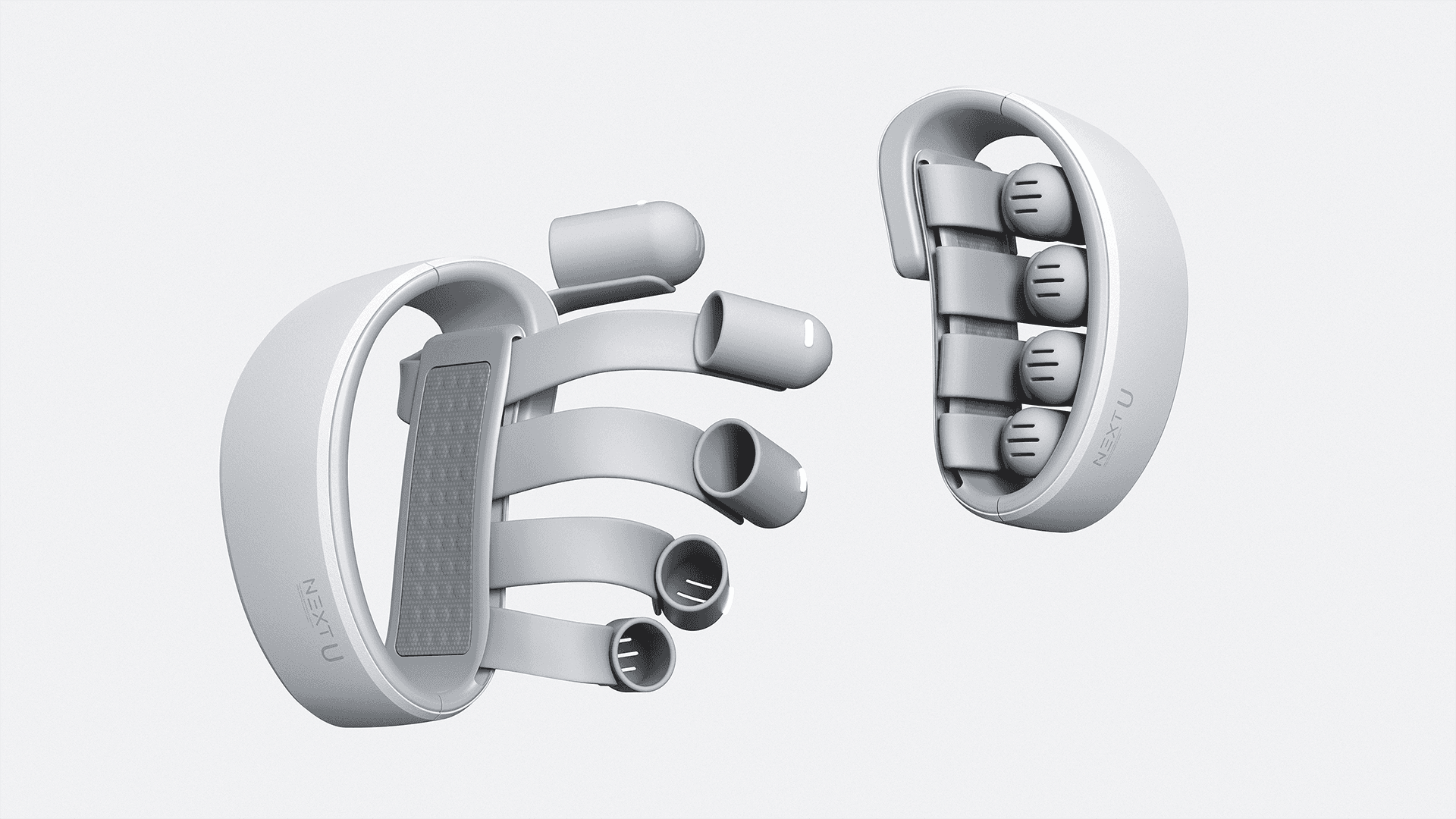
Context
ICU patients, often intubated and weakened following emergencies or surgeries, face significant challenges with verbal communication and loneliness. This has guided my design focus towards enhancing patient expression more efficiently and providing a sense of companionship during their treatment.
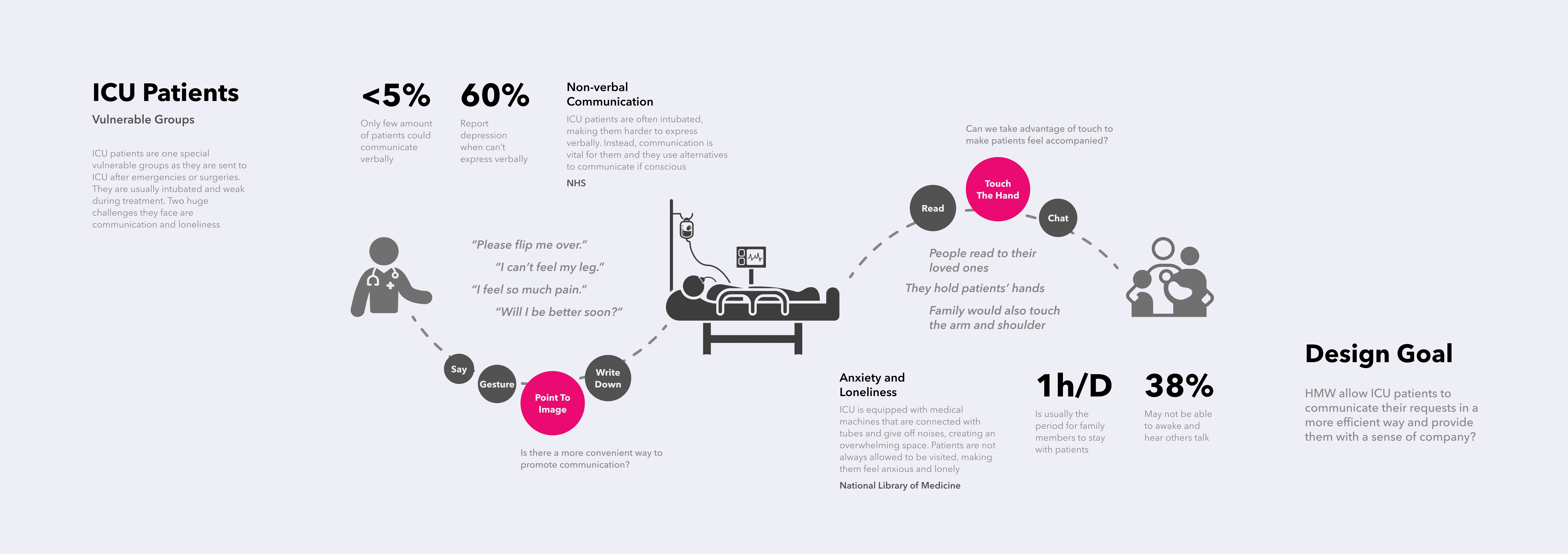
Concept
NEXT U is a hand-wearable device specifically designed for ICU patients, enabling them to communicate through finger gestures when they cannot speak. The device allows for pre-set, commonly expressed requests to be triggered by different finger bending levels, with options for customisation. Additionally, the vibration unit used for feedback also offers haptic relaxation to enhance patient comfort.
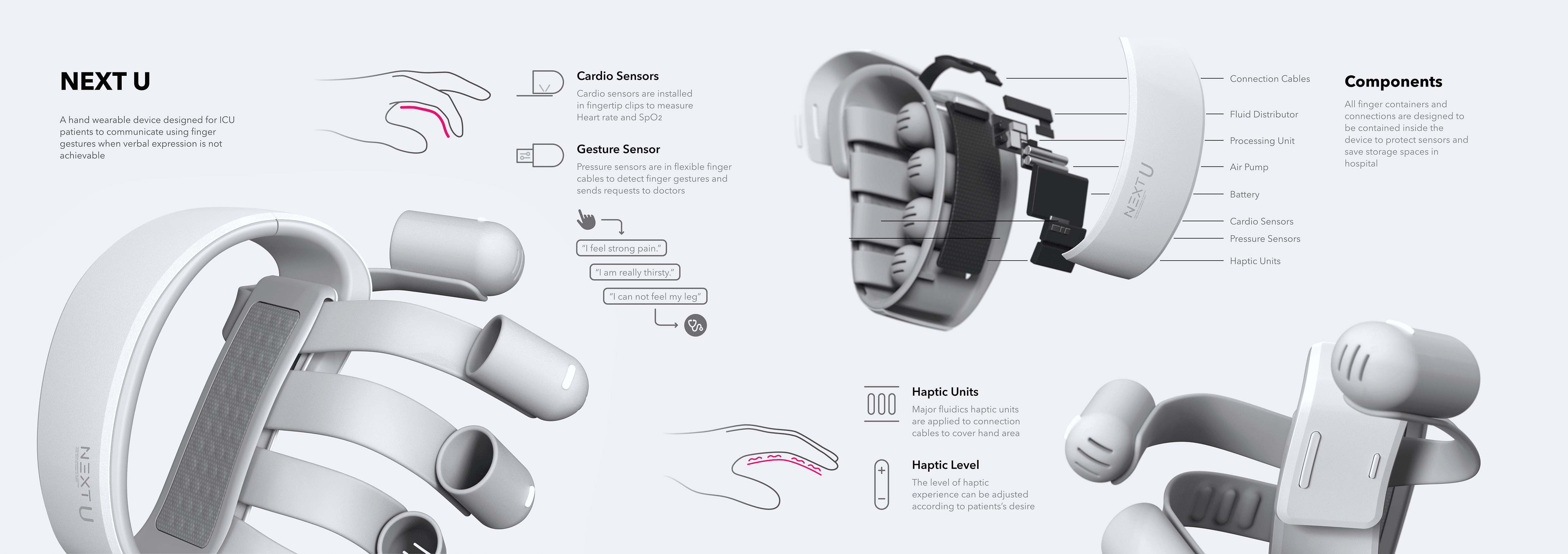
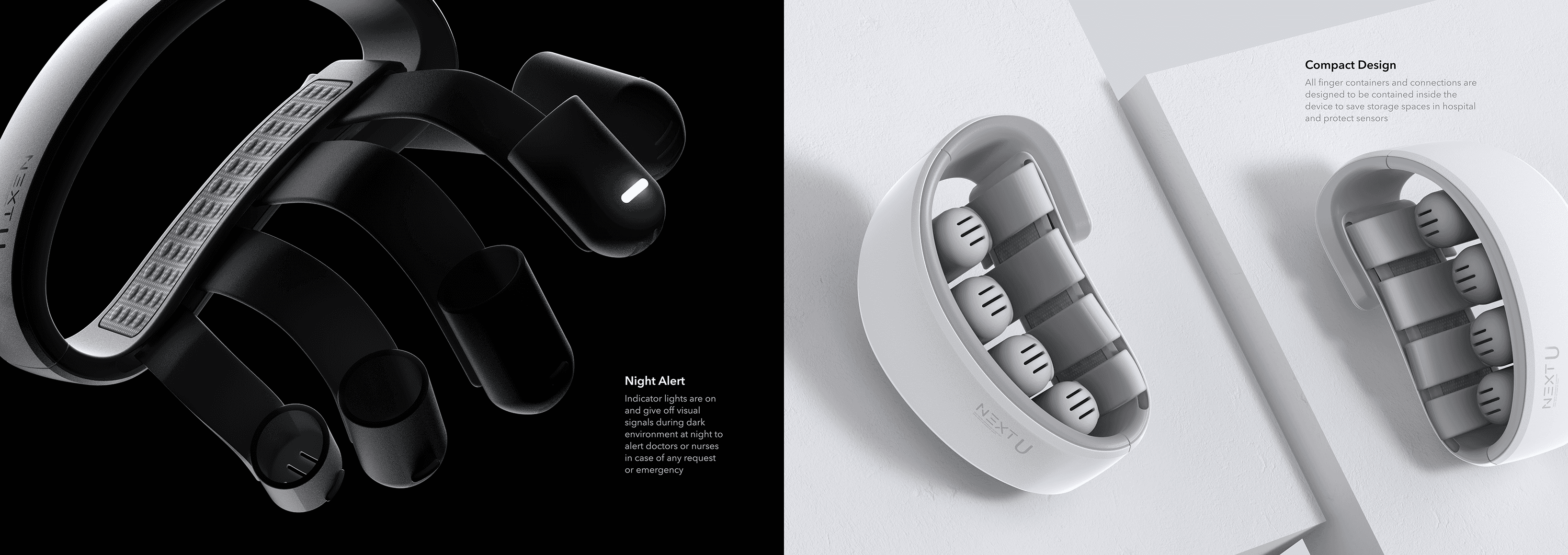
Process
The development process focused on designing a comfortable hand-wearable device that tracks patient hand and finger movements in real time. We tested ergonomics through physical prototypes for both male and female hands and explored various sensor layouts. Digital prototyping involved using Arduino, sensors, and an air pump to simulate the device’s input and output functions.
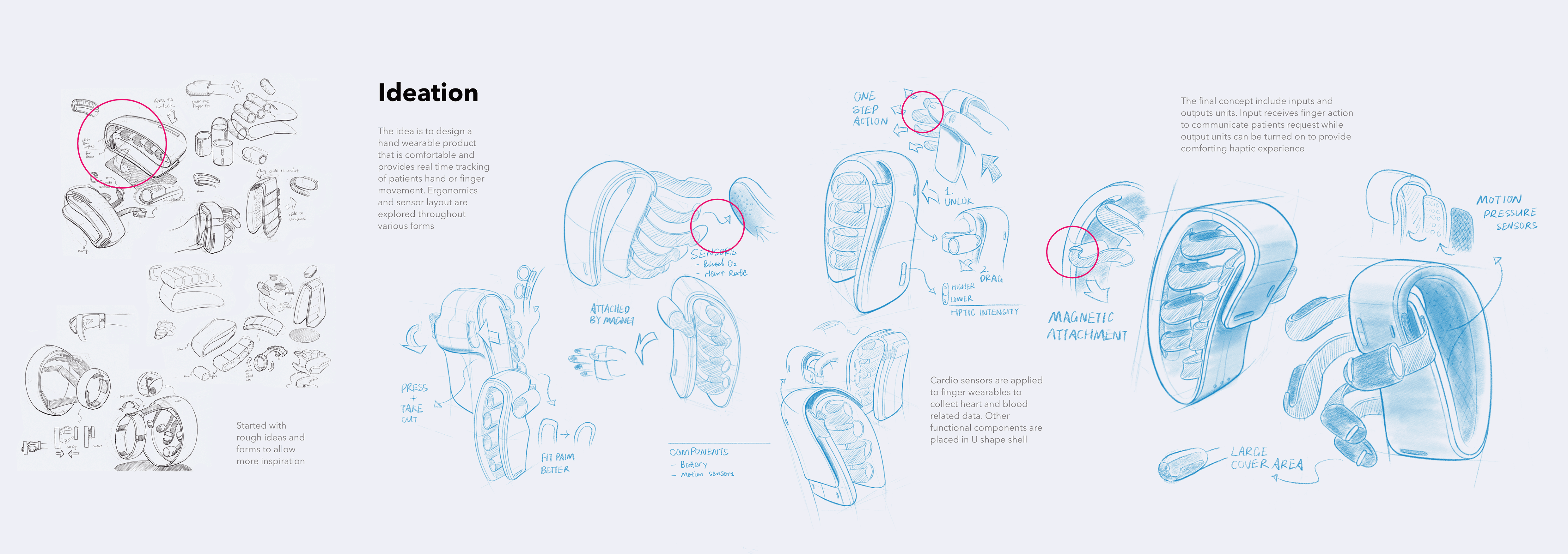

NEXT U
2022
Industrial Design. Interaction Design.
Individual Project
University of Nottingham
Next U introduces a pair of hand-wearable devices equipped with gesture sensors and haptic units. It aims to assist intubated patients to communicate their needs through customised finger gestures when they are too weak to express verbally. Additionally, it offers haptic experience to help relax the patients.


Context
ICU patients, often intubated and weakened following emergencies or surgeries, face significant challenges with verbal communication and loneliness. This has guided my design focus towards enhancing patient expression more efficiently and providing a sense of companionship during their treatment.


Concept
NEXT U is a hand-wearable device specifically designed for ICU patients, enabling them to communicate through finger gestures when they cannot speak. The device allows for pre-set, commonly expressed requests to be triggered by different finger bending levels, with options for customisation. Additionally, the vibration unit used for feedback also offers haptic relaxation to enhance patient comfort.




Process
The development process focused on designing a comfortable hand-wearable device that tracks patient hand and finger movements in real time. We tested ergonomics through physical prototypes for both male and female hands and explored various sensor layouts. Digital prototyping involved using Arduino, sensors, and an air pump to simulate the device’s input and output functions.




NEXT U
2022
Industrial Design. Interaction Design.
Individual Project
University of Nottingham
Next U introduces a pair of hand-wearable devices equipped with gesture sensors and haptic units. It aims to assist intubated patients to communicate their needs through customised finger gestures when they are too weak to express verbally. Additionally, it offers haptic experience to help relax the patients.


Context
ICU patients, often intubated and weakened following emergencies or surgeries, face significant challenges with verbal communication and loneliness. This has guided my design focus towards enhancing patient expression more efficiently and providing a sense of companionship during their treatment.


Concept
NEXT U is a hand-wearable device specifically designed for ICU patients, enabling them to communicate through finger gestures when they cannot speak. The device allows for pre-set, commonly expressed requests to be triggered by different finger bending levels, with options for customisation. Additionally, the vibration unit used for feedback also offers haptic relaxation to enhance patient comfort.




Process
The development process focused on designing a comfortable hand-wearable device that tracks patient hand and finger movements in real time. We tested ergonomics through physical prototypes for both male and female hands and explored various sensor layouts. Digital prototyping involved using Arduino, sensors, and an air pump to simulate the device’s input and output functions.



